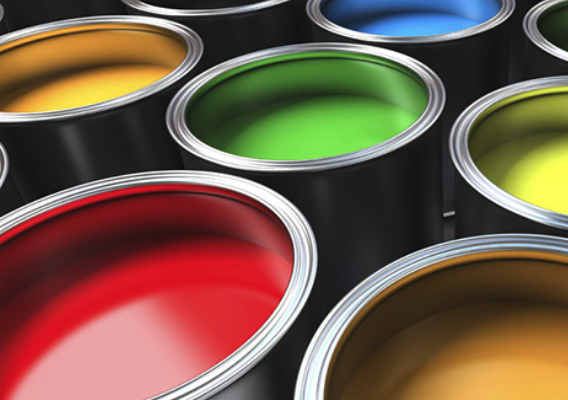Key Points/Overview
Renewable energy sources, such as wind, solar, natural gas and new battery technologies, depend on epoxy technology innovations to help them become more efficient, affordable and scalable.
Epoxy resins used in building and construction applications can help increase the lifespan of buildings by improving the durability of the structural parts, engineering adhesives and paints.
Epoxy resins provide a protective layer that separates food and drinks from the metal used to make their cans. The epoxy resin coatings also help to minimize the corrosion of the metal, which could compromise the safety of the food or drink.
Epoxies have undergone extensive testing for health and environmental effects, and cured, hardened epoxy is inert and unlikely to pose health risks.
Uses & Benefits
Epoxies are used in a range of consumer and industrial applications, due to their durability, strong adhesion, chemical resistance and other specialized properties

Building and Construction
Epoxy resins used in building and construction applications can help increase the lifespan of buildings and decrease the need for refurbishing and repainting, by improving the durability of structural parts, engineering adhesives and paints.
- Paints and Coatings: Epoxy-enhanced paints dry quickly and provide a durable, protective coating. They are useful for factory cast iron, cast steel and cast aluminum applications, and are used to support metal casings by helping them withstand damages from bumps or other impacts. Epoxy coatings include anti-corrosive primers and abrasion- and fire-resistant coatings.
- Flooring: Epoxies play an important role in flooring applications, particularly in environments that require sterile surfaces, such as medical settings and food-processing facilities. The durable nature of epoxies means that epoxy-coated floors can be sanitized using stronger cleaning products.
- Epoxies are also used in high-performance and decorative flooring, such as terrazzo, chip and colored aggregate flooring, and can improve the aesthetic appeal of materials like marble. Epoxy flooring can also be augmented by adding contrasting vinyl chips to the top epoxy layer, or other additives like adding grit to give floors an anti-skid texture.
- Plumbing and Pipes: Epoxy resins are used to make composite pipes and tanks, and as coatings for traditional steel products. Because epoxy pipe lining tends to be durable and resistant to chlorine and microbes, it can be a viable alternative for replacing old piping.
- High-Performance Adhesives: High-performance epoxy adhesives can be used to manufacture laminated wood for decks, walls and roofs. Epoxies are generally more heat- and chemical-resistant than many glues and can adhere to wood, metal, glass, stone and some plastics.

Renewable Energy Applications
Epoxies contribute to a variety of products and technologies that help enhance energy efficiency and reduce greenhouse gas emissions. Many renewable energy sources—wind, solar, natural gas, new battery technologies and more—depend on epoxy technology innovations to become more efficient, affordable and scalable.

Automotive
Epoxy-based coating technology has been used on vehicles for more than 30 years. A thin, anti-corrosive epoxy-based coating can be applied to the auto body as a primer, and then cured and covered with a topcoat that protects the primer from UV light damage. Epoxy resins can help provide adhesion to metal and resistance to rust and corrosion on the vehicle body and other metal parts. Use of epoxies in vehicles, can also help reduce the weight of the automotive components, contributing to enhanced fuel efficiency and lower CO2 and other emissions.

Food Packaging
Epoxy resins have been used in food packaging since the 1950s and provide a protective layer to separate food and drinks from the metal used to make cans.1 If epoxies are not used, the metal could corrode and cause bacteria to penetrate the cans. This could harm the safety of their contents as well as the freshness and nutritional value of the food. Cans coated with epoxy can have a longer shelf life, so consumers can store food for longer periods of time. Epoxy resins also allow local seasonal food to be exported year-round while helping to preserve taste, texture and color.
Glass packaging, such as those used in canning food, also typically rely on epoxies to protect metal lids from corrosion.

Sports and Leisure
Epoxy resins can help make sporting equipment like tennis rackets, skis, golf equipment, hockey sticks, fishing rods and poles, kayaks and bicycles lighter, stronger and more durable.2 Resin coatings are applied to boats because they are excellent adhesives, highly resistant to moisture absorption and can provide strong abrasion resistance.

Aerospace
Epoxy resins are used in aerospace for aircrafts and satellite systems as a binder for reinforcements such as glass and carbon, helping make them strong and lightweight. They can also be made to resist the extreme temperatures experienced by aircrafts and can help make structural parts last longer.

Additional Uses
Epoxy resins are used in art to design paintings and jewelry, produce varnishes and create castings. Epoxies can be used to finish drawings, photos and pictures and they protect the art from ultraviolet light. Epoxy resin casting allows artists to embed natural materials such as flowers, plants and stones in the casting. Their strength and durability allows them to withstand sculpting and carving at high and low temperatures.3

Safety Information
Epoxies have undergone extensive testing for health and environmental effects. While cured epoxy is inert and unlikely to pose any health risk, some of the resins and hardeners used in the curing process may show hazardous properties and can produce irritating or sensitizing effects. Epoxy systems can be handled safely by taking basic precautions and following specific safety instructions.
Epoxy resins are primarily used in building and construction applications. Workers may be exposed to uncured epoxy resins if they are inappropriately protected or are not handling epoxies resins with appropriate tools.4 Contact can occur when transporting containers of epoxy resins; when mixing, spreading, spraying or rolling epoxy components; or when disposing of empty containers and waste materials. Effects of contact with uncured epoxies can include reddened or swollen skin and skin damage. The correct use of personal protective equipment (PPE) and skin protectant can help protect workers from skin contact. Epoxy Europe has developed a safety brochure with guidance on safe handling of epoxy resins in industrial settings.4
Additionally, standard-setting bodies such as the American Society for Testing and Materials (ASTM)5 and International Organization for Standardization (ISO)6 set standards to help ensure that materials and processes are consistent and fit for purpose.
Bisphenol A (BPA) is used to make epoxy resins. Epoxy linings made with BPA create a protective barrier in metal containers to help prevent canned foods from becoming spoiled or contaminated with bacteria or rust. Epoxy resins used in food packaging have been approved for decades by the U.S. Food and Drug Administration (FDA), the European Food Safety Authority (EFSA), and numerous other government agencies worldwide. FDA states that BPA is safe at the current levels occurring in foods from food-contact applications such as metal can coatings.7 Only minute residual traces of BPA remain in epoxy resin and will either react during the curing process or will be embedded and immobilized into the cured resin.
Sources
- Food packaging – Epoxy Europe (epoxy-europe.eu)
- Sports & leisure – Epoxy Europe (epoxy-europe.eu)
- Arts & crafts: the final Touch – Epoxy Europe (epoxy-europe.eu)
- EPOXY_SafetyBrochure_2017.pdf (epoxy-europe.eu)
- ASTM D1763 – 00(2021) Standard Specification for Epoxy Resins
- ISO – ISO 3673-2:2012 – Plastics — Epoxy resins — Part 2: Preparation of test specimens and determination of properties of crosslinked epoxy resins
- Bisphenol A (BPA): Use in Food Contact Application | FDA
- Epoxy Resin Systems (ca.gov)
- Abstract for RR-09 (nih.gov)


